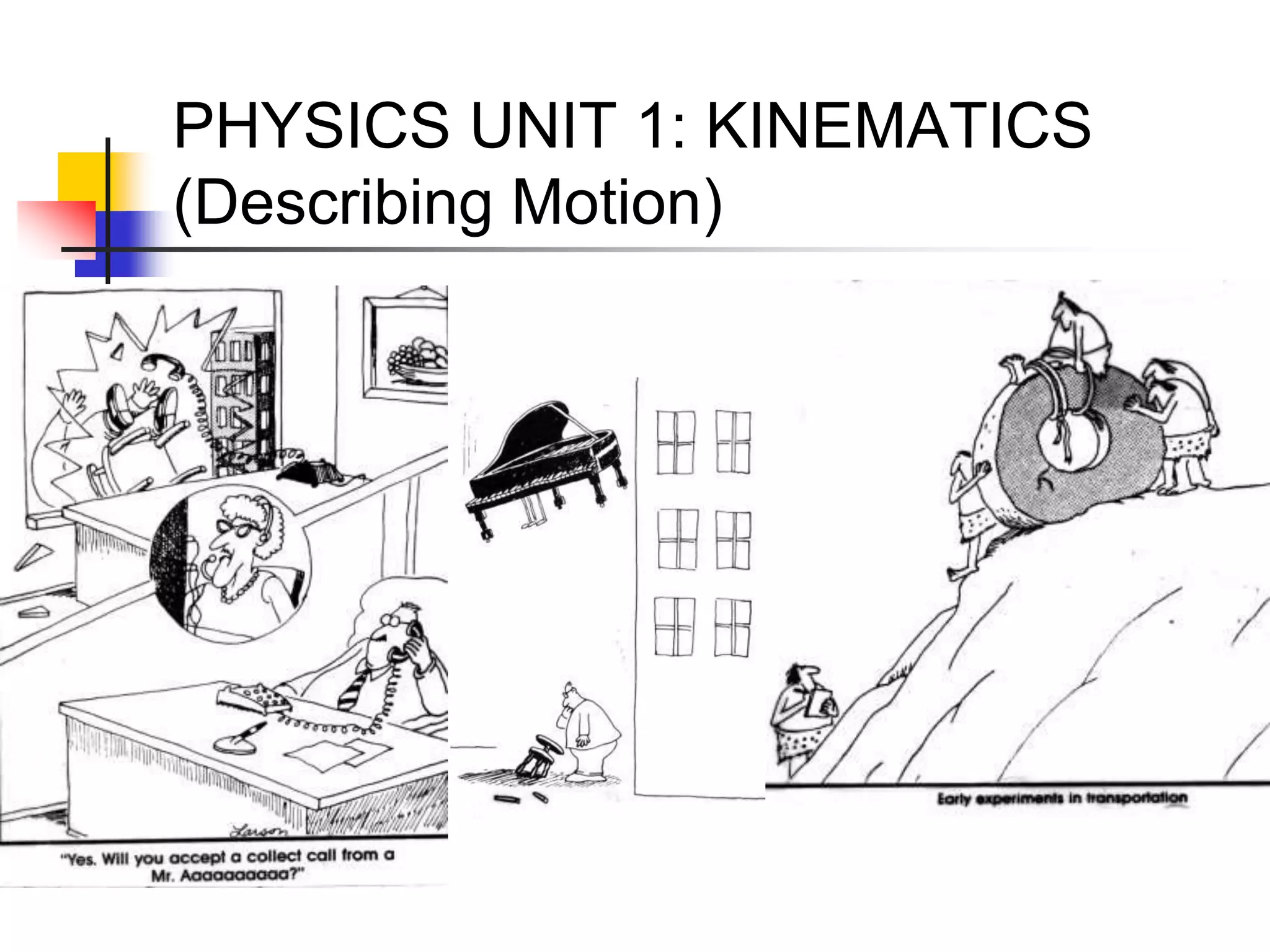
Basics of kinematics PART 2
Parameters of motion
Name: Own Teacher
Email: info@ownteacher.com
Created At: 13-10-2023
Distance and Displacement
(1) Distance: It is the actual path length covered by a moving particle in a given interval of time.
(i) If a particle starts from A and reaches to C through point B as shown in the figure.
The distance travelled by particle = AB + BC = 7m
(ii) Distance is a scalar quantity. (S.I.) Unit: metre
(2) Displacement: Displacement is the change in position vector i.e., A vector joining initial to final
position.
Displacement is a vector quantity. (S.I.) Unit: metre
Comparison between distance and displacement :
(i) The magnitude of displacement is equal to the minimum possible distance between two positions
(ii)For a moving particle, distance can never be negative or zero while displacement can be.
(Zero displacement means that the body after motion has come back to its initial position)
(iii) For motion between two points displacement is single-valued while distance depends on actual path and so can have many values.
(iv) For a moving particle distance can never decrease with time while displacement can. Decrease in
displacement with time means the body is moving toward the initial position.
(v) In general, the magnitude of displacement is not equal to distance. However, it can be so if the motion is along a straight line without a change in direction.
Speed and Velocity
(1) Speed: The rate of distance covered with time is called speed.
It is a scalar quantity having the symbol v. (S.I.) Unit: metre/second (C.G.S.) - cm/second
Types of speed :
(a) Uniform speed: When a particle covers equal distances in equal intervals of time, (no matter how
small the intervals are) then it is said to be moving with uniform speed. In the given illustration motorcyclist travels an equal distance (= 5m) each second. So we can say that the particle is moving with a uniform speed of 5m/s
(b) Non-uniform (variable) speed: In non-uniform speed particle covers unequal distances in equal
intervals of time. In the given illustration motorcyclist travels 5m in 1st second, 8m in 2nd second, 10m in 3rd second, 4m in 4th second, etc.
Therefore its speed is different for every time interval of one second. This means the particle is moving at variable speed.
(c) Average speed: The average speed of a particle for a given ‘Interval of time’ is defined as the ratio of distance travelled to the time taken.
(d) Instantaneous speed: It is the speed of a particle at a particular instant. When we say “speed”, it
usually means instantaneous speed. The instantaneous speed is the average speed for an infinitesimally small time interval.
(2) Velocity: The rate of change of position i.e. rate of displacement with time is called velocity.
It is a scalar quantity. (S.I.) Unit: metre/second
(a) Uniform velocity: A particle is said to have uniform velocity if the magnitudes as well as direction of its velocity remain the same and this is possible only when the particles move in the same straight line without reversing its direction.
(b) Non-uniform velocity: A particle is said to have non-uniform velocity, if either of magnitude or
the direction of velocity changes (or both changes).
(c) Average velocity: It is defined as the ratio of displacement to time taken by the body
(d) Instantaneous velocity: Instantaneous velocity is defined as the rate of change of the position vector of particles with time at a certain instant of time
(v) Comparison between instantaneous speed and instantaneous velocity
(a) instantaneous velocity is always tangential to the path followed by the particle.
(b) A particle may have constant instantaneous speed but variable instantaneous velocity.
(c) The magnitude of instantaneous velocity is equal to the instantaneous speed.
(d) If a particle is moving with constant velocity then its average velocity and instantaneous velocity are
always equal.
(e) If displacement is given as a function of time, then the time derivative of displacement will give velocity.
Comment List
Leave a Comment.



